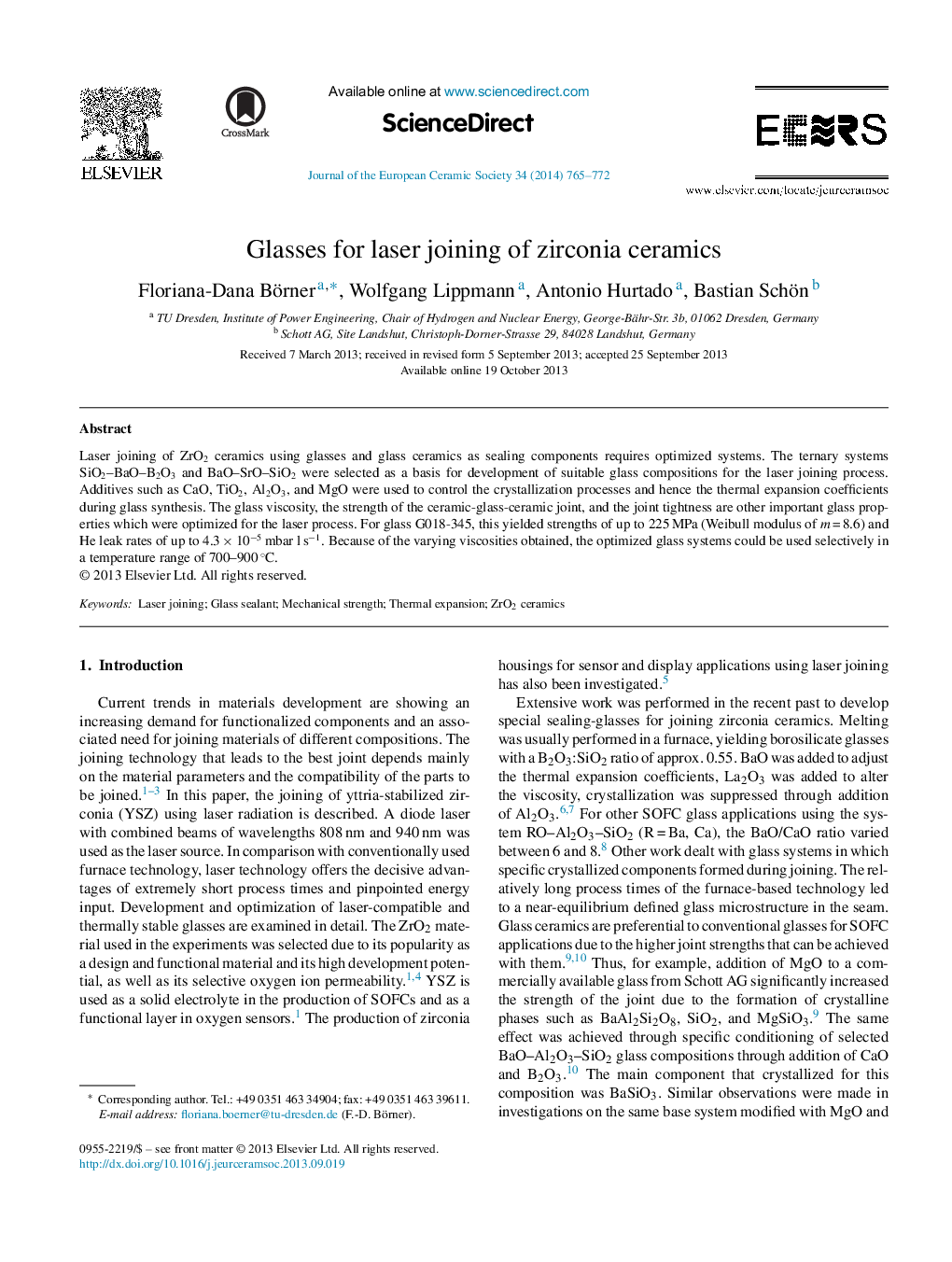| Article ID | Journal | Published Year | Pages | File Type |
|---|---|---|---|---|
| 10629538 | Journal of the European Ceramic Society | 2014 | 8 Pages |
Abstract
Laser joining of ZrO2 ceramics using glasses and glass ceramics as sealing components requires optimized systems. The ternary systems SiO2-BaO-B2O3 and BaO-SrO-SiO2 were selected as a basis for development of suitable glass compositions for the laser joining process. Additives such as CaO, TiO2, Al2O3, and MgO were used to control the crystallization processes and hence the thermal expansion coefficients during glass synthesis. The glass viscosity, the strength of the ceramic-glass-ceramic joint, and the joint tightness are other important glass properties which were optimized for the laser process. For glass G018-345, this yielded strengths of up to 225 MPa (Weibull modulus of m = 8.6) and He leak rates of up to 4.3 Ã 10â5 mbar l sâ1. Because of the varying viscosities obtained, the optimized glass systems could be used selectively in a temperature range of 700-900 °C.
Related Topics
Physical Sciences and Engineering
Materials Science
Ceramics and Composites
Authors
Floriana-Dana Börner, Wolfgang Lippmann, Antonio Hurtado, Bastian Schön,
